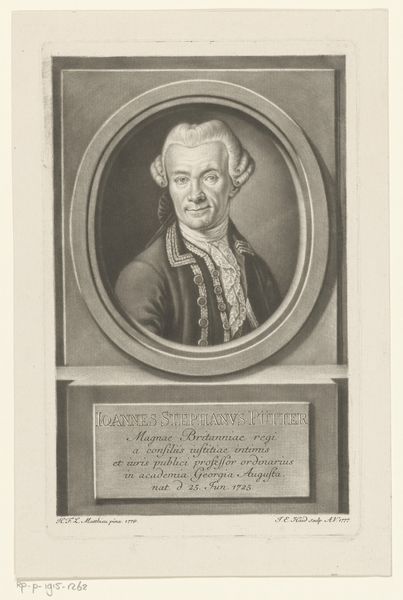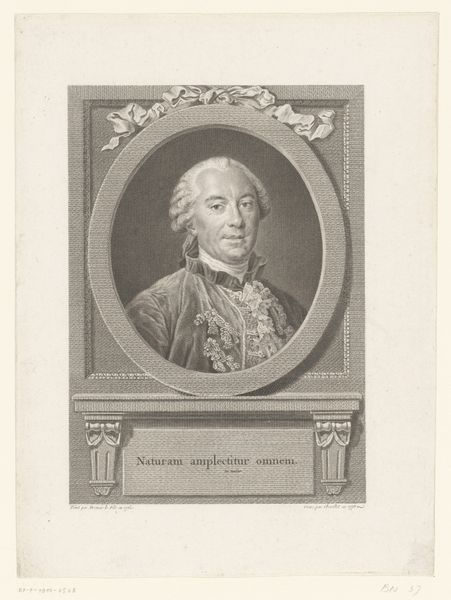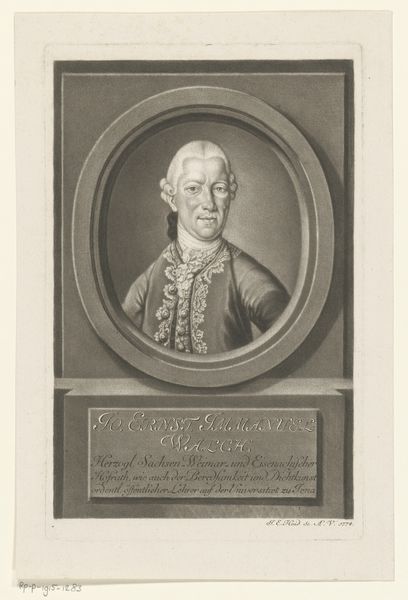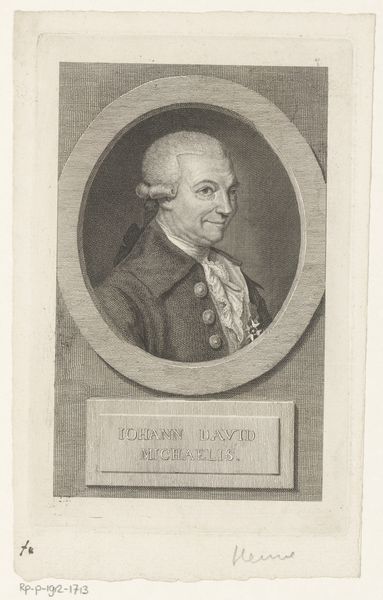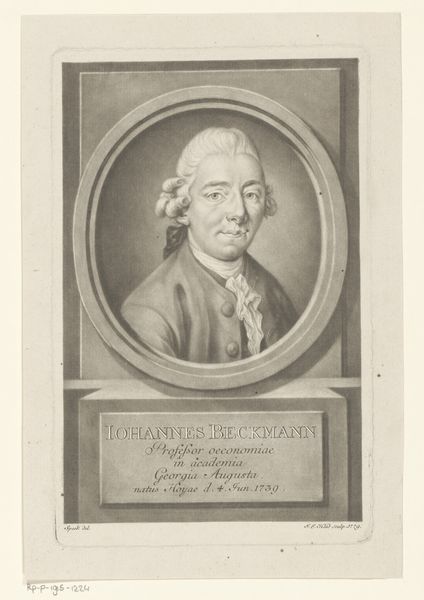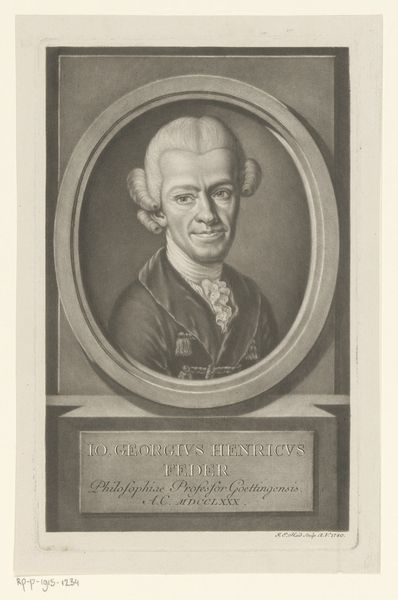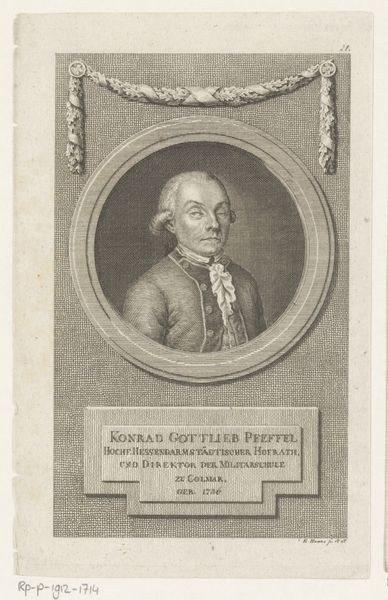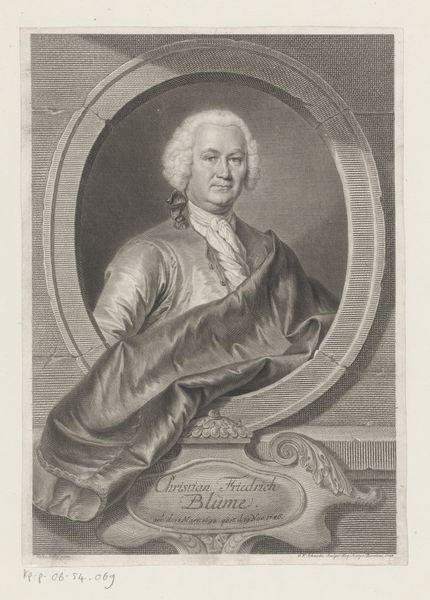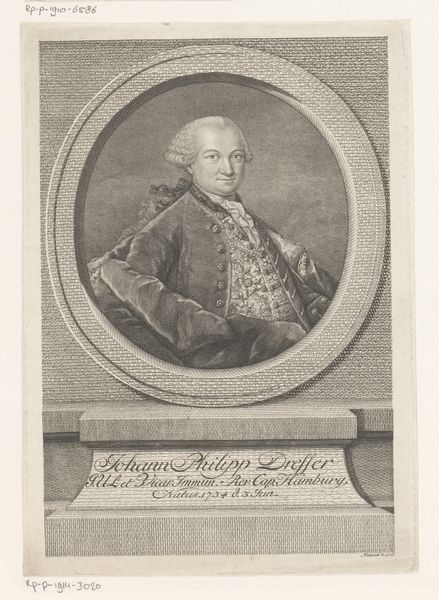
Dimensions: height 220 mm, width 140 mm
Copyright: Rijks Museum: Open Domain
Curator: What an intriguing character study. We're looking at Johann Elias Haid's "Portret van August Ludwig von Schlözer," created in 1779 and currently housed at the Rijksmuseum. Editor: Austere! The gray tones give the portrait an almost stony quality. There's something about that oval frame... it makes him seem encased, as if he's been preserved for posterity. Curator: Yes, there is a very formal structure at play. Note how Haid uses the oval and the rectangular plaque beneath to frame the subject, drawing the eye immediately to the sitter's face. The simplicity in its lines adds a monumental quality, doesn't it? Editor: Definitely. But what's also striking is that it’s a print. I find myself thinking about the physical labor involved, the skill needed to translate that level of detail through a medium like engraving. The lines aren’t just marks; they were cut, etched, each carrying intentionality, and that impacts the feel, you know? Curator: Precisely. The careful modeling of Schlözer's face is superb, especially when contrasted with the relative flatness of his clothing. Observe how this technique heightens the sense of three-dimensionality and separates the subject from the background. Editor: And then consider the context of portraiture at the time. Think of the purpose these images served, who they were for. Was it for broad distribution to assert presence, prestige, and position in that period? I imagine this print allowed for a more economical representation than an oil painting may have permitted. Curator: An interesting proposition. To think of how semiotics would interpret this, you see Schlözer not just as an individual but also as a signifier, carrying meanings about intellect, status, and enlightenment ideals. Editor: It adds depth. And considering that the print states his profession and place—Professor in Göttingen—highlights the purpose behind its material existence and, ultimately, its production. Curator: Exactly. We've had a peek into the symbolic order embedded within Haid’s composition and its sociohistorical ramifications, haven’t we? Editor: Yes. It enriches the visual experience of seeing and reinterpreting the meaning behind printed labor and social dissemination.
Comments
No comments
Be the first to comment and join the conversation on the ultimate creative platform.
